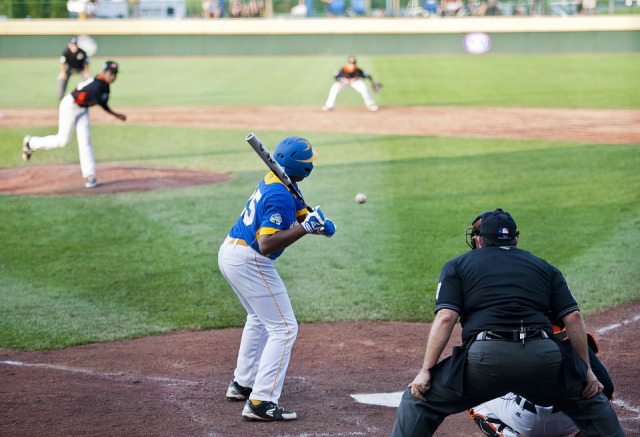 What makes a good high school hitter? Certainly you can look at results-based metrics as simple as batting average and as complex as launch angle, exit velocity, and biomechanical data. Although the ‘perfect’ swing type/path will be debated forever, coaches are getting better and better at being able to observe swing mechanics, track data, and implement changes in hopes of seeing improvement. And there are many great swing coaches out there, for sure.
What makes a good high school hitter? Certainly you can look at results-based metrics as simple as batting average and as complex as launch angle, exit velocity, and biomechanical data. Although the ‘perfect’ swing type/path will be debated forever, coaches are getting better and better at being able to observe swing mechanics, track data, and implement changes in hopes of seeing improvement. And there are many great swing coaches out there, for sure.
But how many are training the mental game on a regular basis? How much practice time are you using to teach routines, self-talk and mental performance?
Yogi Berra once said, “Baseball is 90 percent mental. The other half is physical.” Even if the mental game is, say, only 50% of baseball, why are we not spending more time on the mental game?
Statistics and observations indicate hitting a 90-mph baseball is the hardest athletic skill there is. The physics behind hitting a spherical ball with a round bat requires skills only a few possess, but then, add game-time anxiety and only a select few are capable of any success. So can we give our players a path towards increasing their success?
A set mental routine or approach is an essential first step to improving a young player’s success. With a fixed routine a player can arrive at the plate in a familiar position and with a clear mind and a singular focus on hitting.
During my years of coaching high school hitters, I created a simple acronym: OGA, which stands for:
O – Observe
G – Gather Information
A – Assess
How would a player use this?
All at-bats need to start in the pregame. Players should be OBSERVING (O) the opposing pitcher’s pregame warm up. Where is his release point, which pitches is he practicing, how fast does he work, what is his velocity? While observing, hitters should start timing the pitcher’s delivery in the wind-up and the stretch. “In the hole” batters must be GATHERING (G) information – looking for pitch sequences, what is the pitcher's out pitch, whether they are tipping, does their tempo or arm slot change on off-speed, etc. The gathering includes asking previous batters what they saw, what kind of pitches were thrown and, once again, timing the pitcher with dry swings.
“On deck” is the hitter’s last chance to organize the data he accumulated, remind himself of the pitcher’s physical cues, and other possible cues that came out of batting practice. On deck is also a great time to practice positive self-talk.
The time spent before the game Observing and Gathering allows the hitter’s brain to organize input into a routine before he/she steps into the batter’s box, which can prevent anxiety and simplify the approach. Reducing anxiety allows you to “see the ball, hit the ball” more consistently.
The at-bat does not end until the hitter returns to the dugout and the ASSESSMENT (A) process is completed. What did I learn, what can I use for the next at-bat? Now “flush” the rest and prepare for defense, encourage a teammate and/or start preparing for the next opportunity.
Do not expect a hitter to have a beneficial routine unless they have been taught the importance of routines, both physical and, more importantly, mental! If a player has not practiced it, how can we expect it? An old coaching phrase I really like is “practice how you play and you will play like you practiced.” I know we have had a lot of success and positive feedback from the OGA method, and I feel like it is a great way to develop a young player’s approach to the mental game of hitting. It can also be easily adapted to help players defensively and on the mound as well.
Just some thoughts from a baseball “lifer” wanting to share. Hope you can get something out of it!